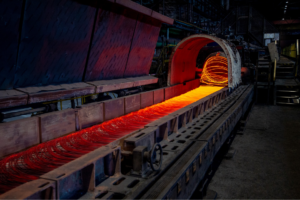
The Kametstal plant, part of the Metinvest mining and metallurgical group (Kamensk, Dnipropetrovsk region), has completed the reconstruction of continuous casting machine No. 1 in the converter shop as part of its 2025 investment program.
According to the company, following the successful completion of the second stage of the investment project, key equipment of the machine’s pulling and straightening devices has been upgraded.
It is specified that new motor reducers for the pulling and straightening device were installed on each of the seven streams of the CCMC-1, on which thermal shielding was also performed.
“In this way, steelmakers have solved the urgent issue of extending the service life of motor reducers, which ensure the stable movement of the pulling and straightening devices. Previously, this equipment failed prematurely due to the destructive effects of high temperatures,” the report states.
Encoders were also installed and put into operation on all upper motors of the gear motors. These devices, thanks to feedback in control, make it possible to control and stabilize the speed of the continuously cast billet and, thus, increase the accuracy of its cutting.
The second stage of the reconstruction of the No. 1 continuous casting machine was carried out without additional machine stoppages, given the need to fulfill orders for commercial steel products, particularly those of higher quality, for domestic and European customers. Each stream was technically prepared in advance for the replacement of equipment, and during the technological stoppage, updates were carried out in pit stop mode.
As a result of the second stage of reconstruction, metallurgists received a number of technical and economic advantages: several times longer service life of the motor reducers of the stoves; maximum precision of cutting the billets, which made it possible to reduce metal consumption. In addition, the technical solutions implemented optimized the operation of the pulling and straightening device to reduce electricity consumption on the upper and lower motor reducers by 1.2 kW*hour while maintaining stable casting on the machine.
Kametstal is part of the Metinvest Group.

The pharmaceutical company Galichpharm JSC (Lviv) plans to increase sales by 15% by the end of 2025, according to a report posted on its website.
According to the report, in the first nine months of 2025, Galichpharm produced 4.753 million packages of finished medicines worth UAH 904.94 million.
The average cost of one package of manufactured medicines in the form of injections was UAH 132.24, infusions – UAH 32.35, liquids and syrups – UAH 67.9, and tablets – UAH 22.24.
The company’s revenue for January-September reached UAH 252.449 million.
In addition, the company reports that exports accounted for 9.13% of total sales, and its products were supplied abroad for more than UAH 23 million. The company exports to the markets of Kazakhstan, Georgia, Uzbekistan, Latvia, and other countries.
According to the company’s estimates, Galichpharm ranks fifth in terms of retail sales in monetary terms for the first nine months of 2025, with a market share of 1.3%.
As reported, at the end of 2024, Galichpharm reduced its net profit by 39% compared to 2023, to UAH 13.705 million, while in 2023 this figure was UAH 22.52 million.
As reported, the investment company Sky Development won an open auction organized by the Deposit Guarantee Fund and acquired the rights to claim the insolvent JSC Bank Finance and Credit under ten loan agreements with leading Ukrainian pharmaceutical companies: JSC Galichpharm and JSC Kyivmedpreparat. According to Sky Development, the total amount of its claims exceeds UAH 3.5 billion.
For their part, Kyivmedpreparat and Galichpharm stated that the information disseminated by Sky Development is “unreliable, manipulative, and shows signs of deliberate discrediting of the companies’ activities.” In particular, both companies denied the existence of “multibillion-dollar debts” to Sky Development. The pharmaceutical companies regarded the statements of Sky Development LLC as “an attempt to illegally create non-existent creditor debt for the purpose of a possible raider takeover of the companies.”
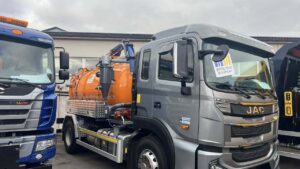
Budshlyakhmash has begun construction of a new 3,000 sq. m production complex in Brovary (Kyiv region), which will be used to manufacture vehicle frames, allowing the company to increase the localization of municipal and special equipment it produces from the current 40-60% to 75%, according to Dmytro Kysilevsky, deputy chairman of the Verkhovna Rada Committee on Economic Development.
“The start of production of vehicle frames is scheduled for mid-2026,” he wrote on Facebook on Tuesday.
According to him, this indicator (40-60% localization) was achieved thanks to licensed SKD assembly of equipment based on Daewoo and JAC chassis with the right to use its own VIN code.
“The contract with these companies provides for permission to replace imported components with Ukrainian ones,” Kysilevsky said.
The MP noted that after the launch of frame production, Budshlyakhmach plans to establish the production of wheel axles, as well as order tires, fuel tanks, and plastic components from other Ukrainian manufacturers.
“Next spring, Budshlyakhmach plans to start developing a new production site on the outskirts of Brovary to create an industrial park with a machine-building cluster. Forty thousand square meters of industrial buildings will be built on an area of 11 hectares. The total investment in this project is about $40 million,” Kysilevsky said.
According to him, investment in new production facilities is stimulated by localization legislation. This year, it requires a mandatory Ukrainian component of at least 25% in public procurement of equipment, and in 2026, the minimum localization level will increase to 30%.
Budshlyakhmash manufactures dump trucks, garbage trucks, truck cranes, sand spreaders and watering machines, tow trucks, and other equipment. In 2025, production volumes will be about 70 units per month.
According to opendatabot, in 2024, the Spetsbudmash plant in Brovary, where Budshlyakhmash Group’s automotive equipment is manufactured, earned UAH 4.2 billion in revenue and UAH 298.5 million in net profit, and in the first nine months of this year, UAH 3.3 billion and UAH 265 million, respectively.
The ultimate beneficiaries are Myroslav and Oleksandr Guiwan.
The Budshlyakhmash group of companies is the official representative in Ukraine of domestic and foreign manufacturers of special, road, and municipal equipment (JAC, Scania, Renault, MAN, Pronar, Daewoo, and Spetsbudmash brands).
Last year, Budshlyakhmash Trading House LLC received UAH 2.18 billion in revenue and UAH 22.9 million in net profit, and in January-September 2025, UAH 138.7 million and UAH 1.9 million, respectively.
The ultimate beneficiary is Myroslav Guiwan.
Budshlyakhmash, EQUIPMENT, FACTORY, frame, Kysilevsky, PRODUCTION
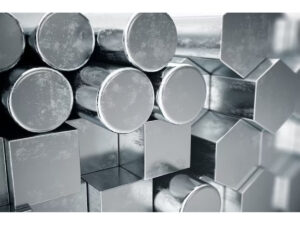
Global stainless steel production in January-September this year increased by 3% compared to the same period last year, from 46.623 million tons to 48.020 million tons.
These figures are given in a press release from the International Stainless Steel Association (formerly the International Stainless Steel Forum, ISSF).
According to the information, in the third quarter of 2025, production reached 16.1 million tons, which is 2.3% more than in July-September 2024.
At the same time, stainless steel output in Europe decreased by 4.2% to 4.498 million tons during this period. In the US, production increased by 9.3% to 1.649 million tons.
In Asia (excluding China and South Korea), stainless steel production increased by 1.1% to 10.771 million tons, and in China, it increased by 4.7% to 30.453 million tons.
In other regions (Brazil, Russia, South Africa, South Korea, and Indonesia), production fell by 5.7% to 649,000 tons.
As reported, global stainless steel production in 2024 increased by 7% compared to 2023, to 62.621 million tons from 58.539 million tons, with production growing in all major regions.
At the same time, stainless steel production in Europe in 2024 increased by 1.5% to 6.088 million tons. In the US, production increased by 6.9% to 1.950 million tons. In Asia (excluding China and South Korea), stainless steel production increased by 6.4% to 7.322 million tons, and in China it grew by 7.5% to 39.441 million tons. In other regions (Brazil, Russia, South Africa, South Korea, and Indonesia), production increased by 9.2% to 7.820 million tons.
Global stainless steel production in 2023 increased by 4.6% compared to 2022, to 58.444 million tons. Overall, stainless steel production in Europe fell by 6.2% to 5.902 million tons this year, and in the US by 9.6% to 1.824 million tons. Meanwhile, in Asia (excluding China and South Korea), stainless steel production decreased by 7.2% to 6.880 million tons, while in China it increased by 12.6% to 36.676 million tons. Other regions (Brazil, Russia, South Africa, South Korea, and Indonesia) saw a 5.2% decline in production to 7.163 million tons.
Global stainless steel production in 2022 decreased by 5.2% compared to 2021, to 55.255 million tons. At the same time, production in Europe fell by 12.4% to 6.294 million tons, and in the US by 14.8% to 2.017 million tons. In Asia (excluding China and South Korea), stainless steel production decreased by 4.9% to 7.411 million tons, and in China by 2% to 31.975 million tons. Other regions saw a 9.1% decline in production to 7.557 million tons.
Earlier, the Experts Club information and analytical center released a video dedicated to global steel production and leading producing countries – https://www.youtube.com/shorts/VgUU9MEMosE
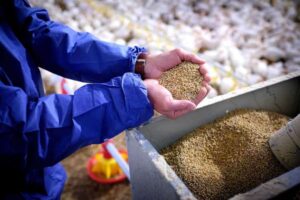
Khorol Mechanical Plant (Ukraine) has begun the process of localizing production in Turkey, according to the information and analytical agency APK-Inform, citing information from Valentin Surmach, director of the technical department at KMP.
“Taking into account the successful experience of joint implementation of complex projects, Izvik Makina Muhendislik Ic Ve Dis Ticaret Limited Sirketi has been selected as the main partner in the localization process,” he said at the AgroFood Summit-2025 international conference (Mersin, Turkey).
According to him, the localization stages include large-scale assembly, equipping products with electric motors and gear motors from Turkish manufacturers, and the phased organization of the production of components and parts in Turkey, including on the basis of outsourcing (by mutual agreement).
The plant confirms the warranty for equipment manufactured in the localization process, as well as the technical parameters of the technological lines based on the plant’s equipment, which Izvik Makina offers to its customers.
Khorol Mechanical Plant is a Ukrainian enterprise specializing in the manufacture of equipment for grain storage and cleaning; production of mixed fodder, cereals, flour, oil, seed material; aspiration systems; mechanical grain transportation; production of fuel pellets, briquettes, etc.
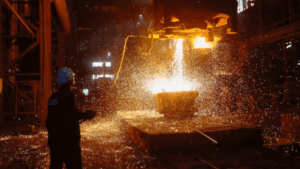
Global steel production in October 2025 decreased by 5.9% compared to October 2024, to 143.340 million tons, with declines recorded in most of the top ten producing countries, according to data from the World Steel Association (Worldsteel).
The top ten countries in terms of steel production in October 2025 are as follows:
China – 72 million tons (down 12.1% compared to October 2024);
India – 13.563 million tons (up 5.9%);
USA – 6.989 million tons (up 9.4%);
Japan – 6.853 million tons (down 1%);
Russia – 5.250 million tons (down 6.2%);
South Korea – 5.093 million tons (down 5.8%);
Iran – 3.316 million tons (up 12%);
Turkey – 3.208 million tons (up 3.1%);
Germany – 3.127 million tons (down 3%);
Brazil – 2.988 million tons (down 2.7%).
In January-October 2025, global steel production decreased by 2.1% compared to the same period in 2024, to 1 billion 517.589 million tons. The top ten producing countries for the first ten months of this year are:
China – 817.870 million tons (down 3.9% compared to January-October 2024);
India – 135.987 million tons (up 10%);
USA – 68.376 million tons (up 2.8%);
Japan – 67.327 million tons (down 4.1%);
Russia – 56.536 million tons (down 4.9%);
South Korea – 51.144 million tons (down 3.6%);
Turkey – 31.277 million tons (up 1.2%);
Germany – 28.505 million tons (down 9.9%);
Brazil – 27.988 million tons (down 1.8%);
Iran – 25.442 million tons (down 1%).
At the end of 2024, 71 countries produced 1 billion 839.449 million tons of steel, which is 0.9% less than in 2023. The leaders were China – 1 billion 5.090 million tons (down 1.7%), India – 149.587 million tons (up 6.3%), Japan – 84.009 million tons (down 3.4%), the United States – 79.452 million tons (down 2.4%), Russia – 70.690 million tons (down 7%), South Korea – 63.531 million tons (down 4.7%), Germany – 37.234 million tons (up 5.2%), Turkey – 36.893 million tons (up 9.4%), Brazil – 33.741 million tons (up 5.3%), and Iran – 30.952 million tons (up 0.8%).
In 2023, 71 countries produced 1 billion 849.734 million tons of steel (down 0.1% from 2022), and in 2022, 64 countries produced 1 billion 831.467 million tons (down 4.3% from 2021), with China continuing to dominate and production growing in India amid declining performance in most developed economies.
Earlier, the Experts Club analytical center released a video analysis of the world’s leading steel producers from 2001 to 2024 – https://youtube.com/shorts/VgUU9MEMosE?si=c5yD04gmNtJoFblB